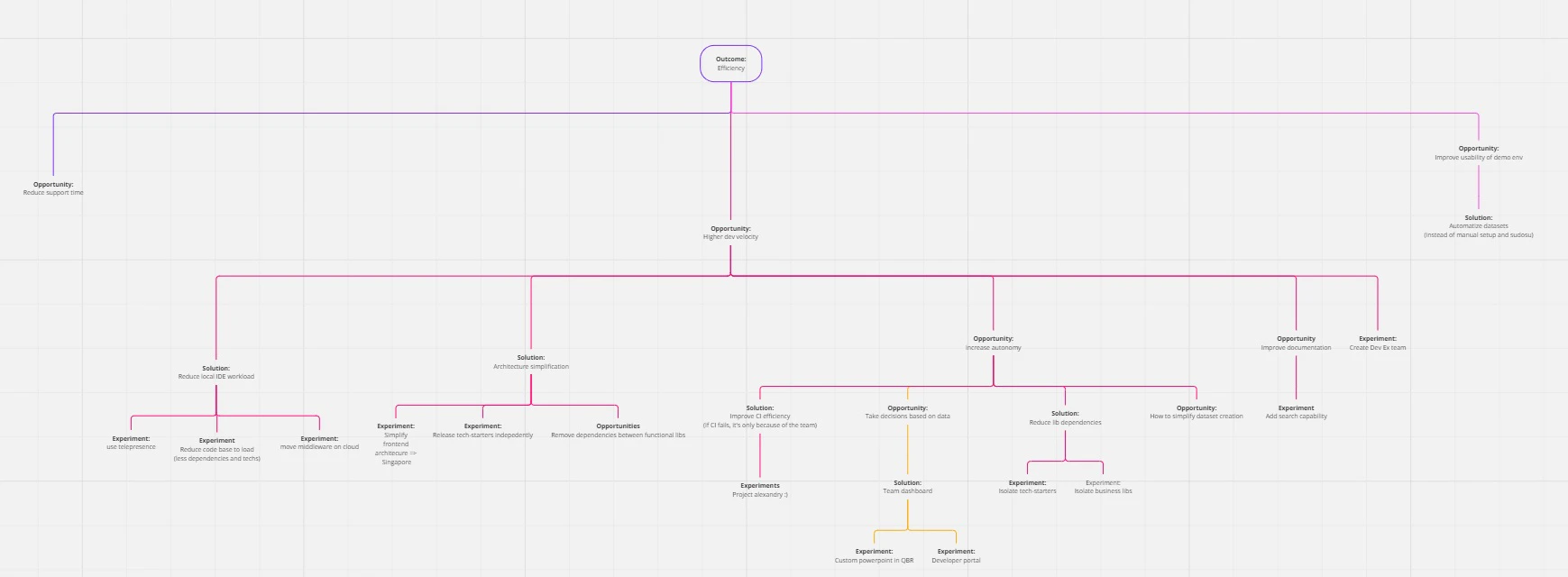Discovering the Opportunity Solution Tree
This post will be shorter than usual, as I wanted to share a tool I use regularly to structure my ideas.
Have you ever heard of "Opportunity solution tree"?
I discovered this approach with Teresa Torres' book: Continuous Discovery Habits.
In my daily routine, I constantly use a TODO.txt file. I talk about it in this post: Choose your battles.
Every day I use this file for two things:
- list all the tasks I've planned for the day
- list the two main tasks I've set myself as goals for the week, month or quarter.
I use it every day. Every morning I reread what I had planned to do, refine, delete, add and correct the trajectory if I feel that my objectives (week, month, quarter) are going in the wrong direction.
It's a great tool for prioritizing and focusing on the essentials.
But I found that it didn't help me structure my ideas and the opportunities I had in mind.
In addition to this file, I have note files in various places, text files, Notions pages etc... It's still very useful for delving deeper into a subject, but it lacks the big picture.
After reading Teresa Torres' book, I quickly got hooked on the opportunity solution tree.

The idea of this tree is to list these main objectives at the top.
For example, in my case, I have a goal to improve efficiency.
Below each objective, we can list the associated opportunities.
An opportunity is just as much :
- a pain point. Example: CI is a pain point linked to efficiency.
- a need: teams are looking for less coupling between them.
Below an opportunity, we can list other opportunities. For example, "to increase team autonomy, I need to improve the quality of the data available to make better decisions".
And finally, below an opportunity, I can list experiments or initiatives that are concrete actions.
I've only been using it for a short time, but this visualization helps me a lot to stay focused and to force myself to connect an experiment to an objective.
I don't use it every day, but once a month, sometimes once a fortnight. I take note of opportunities that seem important to me and review my plans.
I hesitated a bit about which tool to use, but I finally landed on Miro, which allows me to share it if I need to.

For example, here on one of the branches:
Outcome : Efficiency
=> opportunity : higher dev velocity
=> opportunity : architecture simplification
=> initiatives : Simplify the frontend stack (Singapore)
As I said, this is a rather short post. Feel free to share your own tips.



